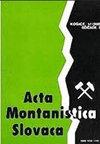在油田开发过程中实施水力压裂时应用区块因素分析法
IF 2.2
4区 地球科学
Q2 GEOSCIENCES, MULTIDISCIPLINARY
引用次数: 0
摘要
这项研究之所以具有现实意义,是因为需要优化西西伯利亚省油田的石油生产过程。目前,实际采油系数经常偏离设计值,导致生产效率低下和资源损失。因此,本研究的目的是开发一种方法论,利用区块因素分析和水力压裂裂缝去设计优化油田开发设施的监控和调节过程。这项工作采用了区块因素分析、三维建模、流体力学建模和数学建模等方法。研究结果是开发出一种优化油田开发设施监测和监管过程的方法。文章还讨论了实际石油产量偏离计算值的主要原因,包括水力压裂技术。文章确定了这一程序的不成功案例及其原因。文章介绍了区块因素分析工具的特点和前瞻性分析方法,以及如何在水力压裂设计和建模阶段使用该工具来提高油井刺激操作的效率。成功实施水力压裂可使实际采油系数接近设计值,这对提高油田生产效率和优化再资源利用非常重要。本文章由计算机程序翻译,如有差异,请以英文原文为准。
Application of the block factor analysis in the implementation of hydraulic fracturing during oil fields development
The relevance of this study is due to the need to optimize the oil production process in the fields of the West Siberian province. At the moment, the actual oil recovery factor often deviates from the design values, which leads to inefficient production and loss of resources. Therefore, the purpose of the study is to develop a meth-odology for optimizing the process of monitoring and regulating an oil field development facility using block factor analysis and de-signing hydraulic fracturing cracks. The work uses methods such as block factor analysis, 3D modeling, hydrodynamic modeling, and mathematical modeling. The result of the study is a developed methodology for optimizing the process of monitoring and regulat-ing an oil field development facility. The article also discusses the main reasons for the deviation of actual oil production from calcu-lated values, including hydraulic fracturing technology. Unsuccess-ful cases of this procedure and their causes were identified. The features of the block factor analysis tool and the proactive analysis method are described, as well as how to use it at the design and modeling stage of hydraulic fracturing to improve the efficiency of the well-stimulation operation. Successful implementation of hy-draulic fracturing allows one to approximate the actual oil recovery factor to design values, which is important for increasing the effi-ciency of production at the field and optimizing the use of re-sources.
求助全文
通过发布文献求助,成功后即可免费获取论文全文。
去求助
来源期刊

Acta Montanistica Slovaca
地学-地球科学综合
CiteScore
3.60
自引率
12.50%
发文量
60
审稿时长
30 weeks
期刊介绍:
Acta Montanistica Slovaca publishes high quality articles on basic and applied research in the following fields:
geology and geological survey;
mining;
Earth resources;
underground engineering and geotechnics;
mining mechanization, mining transport, deep hole drilling;
ecotechnology and mineralurgy;
process control, automation and applied informatics in raw materials extraction, utilization and processing;
other similar fields.
Acta Montanistica Slovaca is the only scientific journal of this kind in Central, Eastern and South Eastern Europe.
The submitted manuscripts should contribute significantly to the international literature, even if the focus can be regional. Manuscripts should cite the extant and relevant international literature, should clearly state what the wider contribution is (e.g. a novel discovery, application of a new technique or methodology, application of an existing methodology to a new problem), and should discuss the importance of the work in the international context.
 求助内容:
求助内容: 应助结果提醒方式:
应助结果提醒方式:


